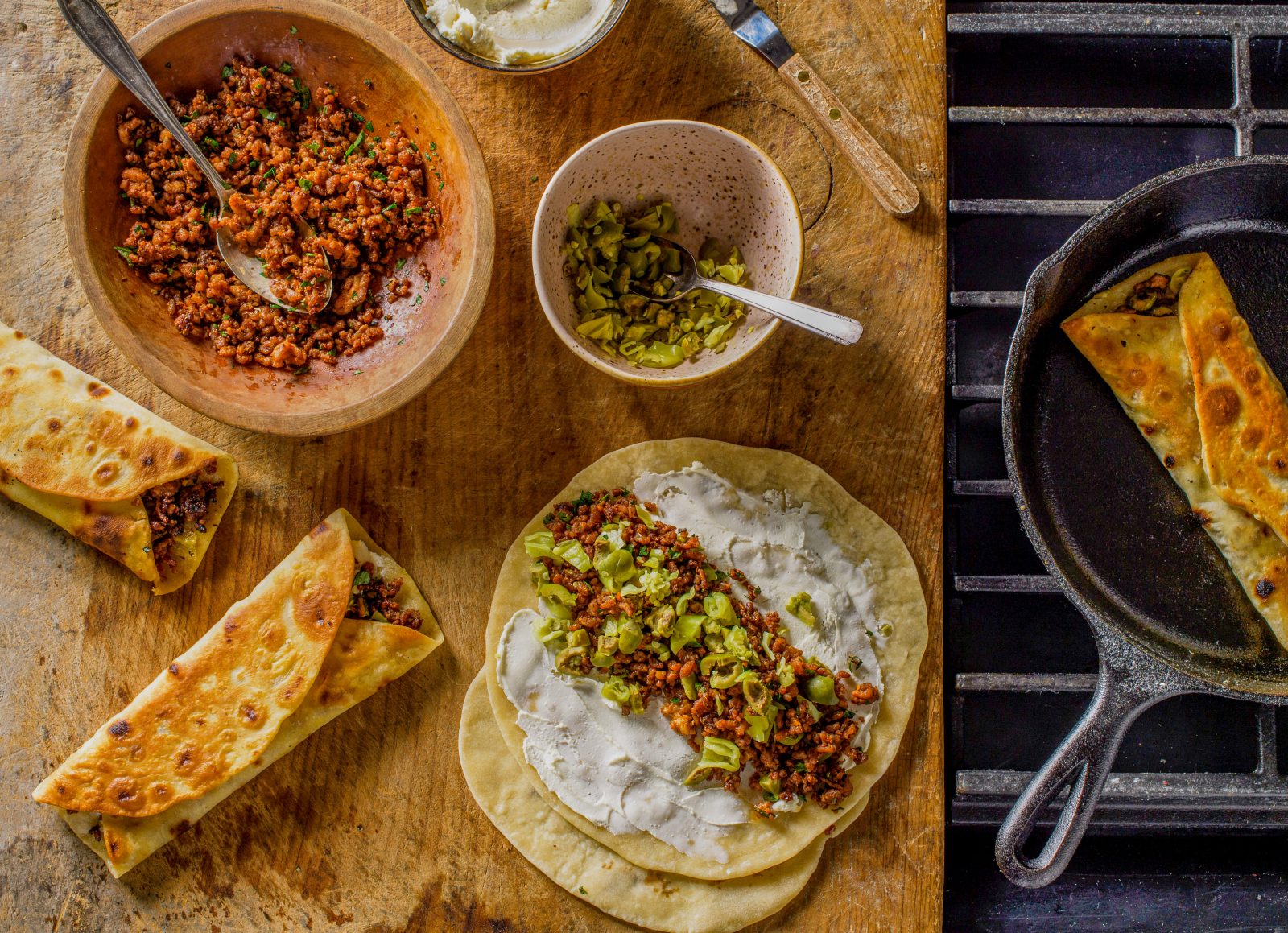Your email address is required to begin the subscription process. We will use it for customer service and other communications from Milk Street. You can unsubscribe from receiving our emails at any time.

Turkish Flatbreads
The Turkish flatbread called yufka is fast and easy to make largely because it’s unleavened (that is, yeast free). As chef Ana Sortun, whose recipe from “Soframiz” we adapted, explains, yufka is more slender than a flour tortilla but more substantial than phyllo. Yufka stuffed with filling, folded and toasted in a skillet becomes a gozleme, or the flatbreads can be used to make sandwich wraps or for scooping up dips and spreads. This dough comes together quickly, requires only an hour of rest, is a breeze to roll out and each bread cooks in just a couple of minutes in a pan on the stovetop. A cast-iron skillet works best for getting nice brown spots on the flatbreads, but nonstick will work, too, if that’s what you own. As the breads come out of the skillet, we slip them into a plastic bag to keep them soft and pliable. Once all the rounds have been cooked, let cool to room temperature, then seal the bag and store at room temperature for up to a day (the breads are best used within 24 hours of making).
Makes six
8- to 9-inch flatbreads
Don’t cook the flatbreads on both sides or they will become too crisp and crackery for folding and wrapping. Browned on only one side, the breads will be fully cooked and ready to eat, but they will remain soft and pliable.
1¾ hours
45 minutes active
Ingredients
-
½
teaspoon plus 2 tablespoons extra-virgin olive oil
-
260
grams (2 cups) all-purpose flour, plus more for dusting
Directions
-
01Coat a medium bowl with ½ teaspoon oil; set aside. In a stand mixer with the dough hook, mix the flour and salt on low until combined, 10 to 15 seconds. With the mixer running, gradually add the water and 2 tablespoons oil, then mix on low until the mixture forms a ball, about 1 minute. Increase to medium and knead until the dough is smooth and elastic, about 3 minutes. Transfer to the prepared bowl, cover with plastic wrap and let rest at room temperature for about 1 hour. Meanwhile, cut six 9-inch squares of kitchen parchment; set aside.
Pardon the interruption
You need to be a Milk Street Digital Member to see the full recipe
JOIN MILK STREET DIGITAL & PRINT
12 WEEKS FOR JUST $1
and get access to all of our recipes and articles online, as well as in print.
GET DIGITAL & PRINT
